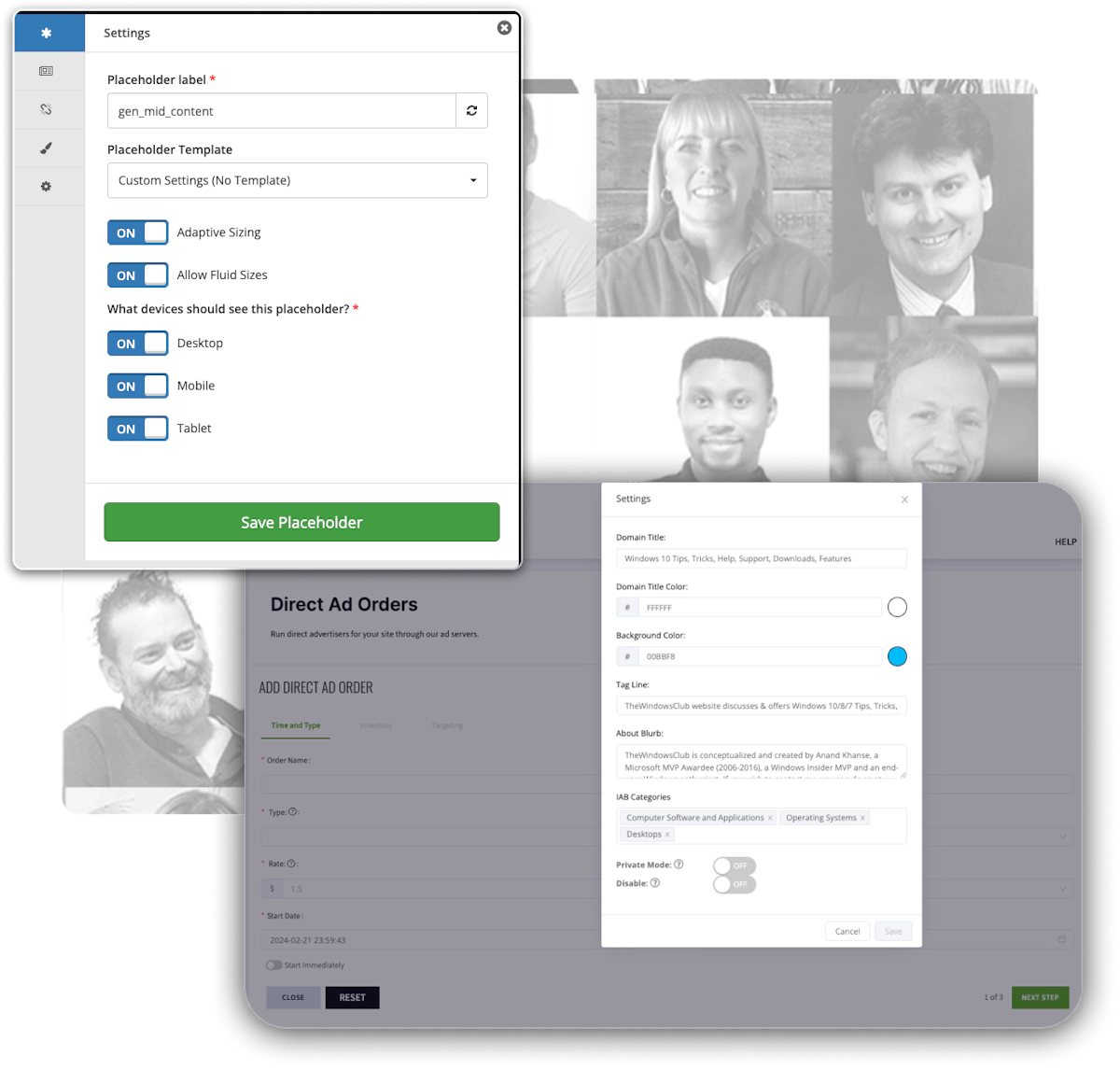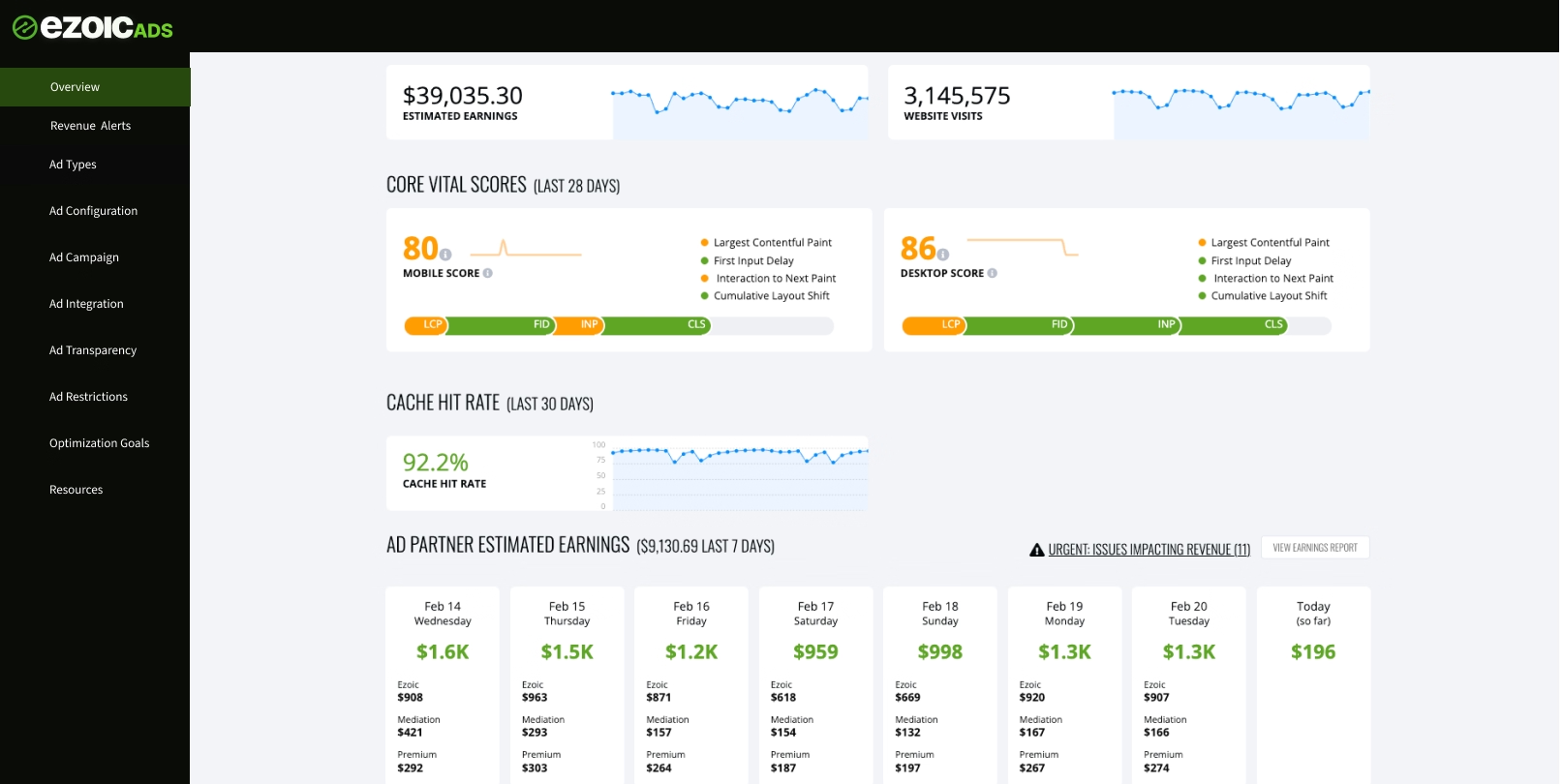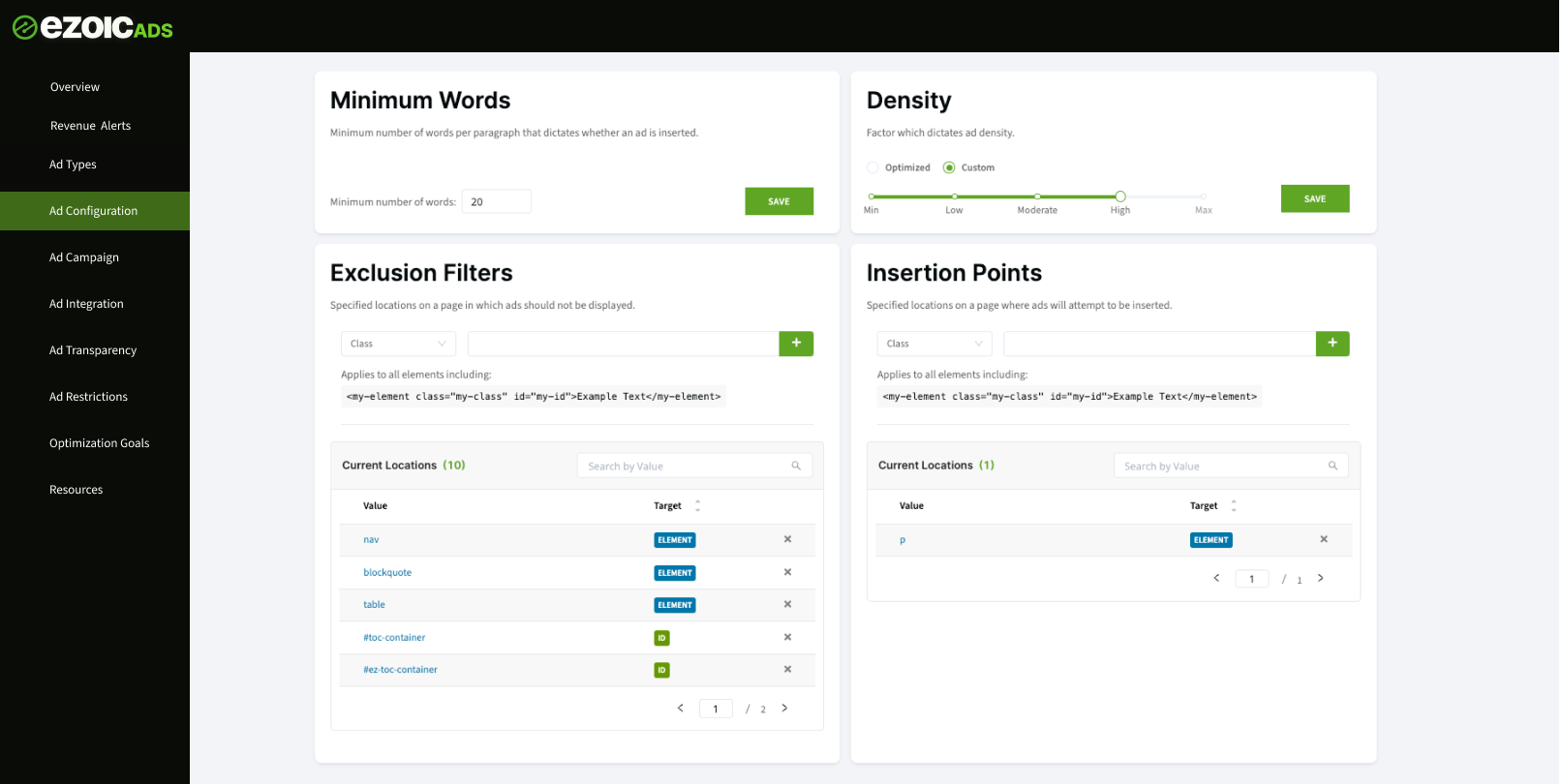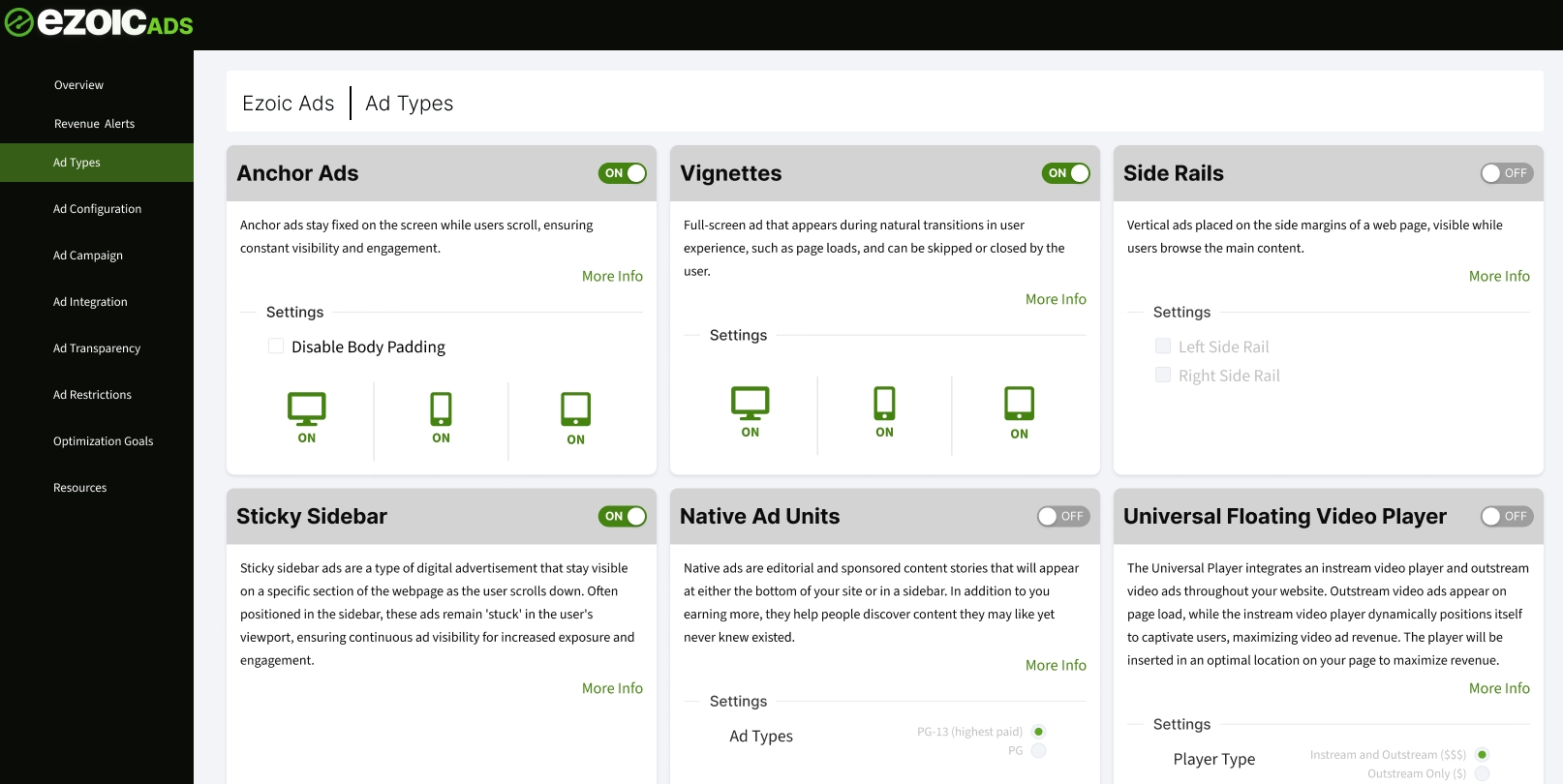Best-In-Class Ad Monetization
Maximize long-term revenue and balance user experience by optimizing every single visit using the industry's most intelligent technology

What Makes Us Different
Unique Ad Demand
Access premiere ad demand through Ezoic's network of elite ad partners, header bidders, and exclusive brand campaigns.
Proven to Improve UX, Ad Quality, & SEO
Prioritize user experience with high-quality, brand-safe ads on fast loading pages. Higher audience engagement equals higher advertising revenue.
The Leading Ad Optimizations AI
Benefit from the most advanced AI for building ad space value available for sale to advertisers. Drive up long-term RPMs using proprietary auction flooring algorithms, high-impact ad units, and dynamic inventory management.
A Modern Monetization Partner
Partner with our team of strategists and engineers, dedicated to optimizing the value of your content at every opportunity.

100%
Unique ad layouts
for your audience
Ad Technology built for all sized publishers
Take advantage of machine learning technology that continually maximizes revenue and improves user engagement by only displaying the right ads, in the right positions at the right time
Explore moreGoogle's Largest Publishing Partner
59,000+ sites have made Ezoic the fastest growing solution for ad managementmonthly pageviews
(and growing)
average revenue increase
average traffic increase
average time on site increase
Complete Your Ad Suite
Empower your monetization strategy with additional features
The World's Best Analytics
The most impactful revenue data, organized for seamless utilization right from the start. No configuration, no tags, it just works. Pre-configured revenue insights for topics, writers, page length, & more.
Works With Your Own Ads
Use all of Ezoic's ad networks and link any existing partners to ensure that the most competitive bids win.
 Direct Ads
Direct Ads Sell Your Own Ads
Manage direct deals with advertisers effortlessly all in one spot. Sites keep 100% of revenue from any linked ad partners.




"With Ezoic, we have a technology partner that actually understands the industry and has helped us take a more data-driven approach with our efforts. The platform has helped us use our data to increase user value by balancing user experiences and revenue optimization."

A Fast Site, More Money,
and happier users
Drive your online growth with EzoicAds -
turning ad revenue into a seamless process
Still have questions? We have answers
- EzoicAds and other monetization features on the platform are available to all sites. There are no minimum traffic or revenue criteria to begin monetizing with EzoicAds.
- All sites must adhere to Google's Ad Policy guidelines which reflect common ad policies standards to all ad networks and exchanges available automatically to sites once they begin using EzoicAds:
- Content should be original and unique.
- All website traffic must be identifiable, human, and without known violations of common policies.
- If a site possesses an existing Google Adsense or Ad Manager account, it must be in good standing with Google.
Publishers can also review our Google Approval Checklist to ensure they are on the fastest track to monetization. - EzoicAds leads the industry in learning and adapting to how ads affect revenue and user experiences. All of the tools and features within the EzoicAds platform ensure that each visitor sees a unique combination of ads in locations that make publishers the most money without detracting from the user's experience. Sites have control over potential ad locations and can set preferences around types of ads, sizes, etc. With the help and expertise of our team, your site will be automatically optimized to achieve your goals.
- Yes! With EzoicAds, the complexity of optimizing your website's ads is completely handled by our intelligent platform. Our advanced machine learning analyzes countless factors affecting ad revenue, testing numerous ad arrangements quietly in the background. This ensures every visitor’s experience is maximized for revenue potential. Trust in our technology to simplify ad management for you.
- Publishers have access to Big Data Analytics to effortlessly track and analyze ad and overall site performance. All of the reports within Big Data Analytics will provide valuable insights so you truly understand how our technology optimizes your site for revenue and user experience.
